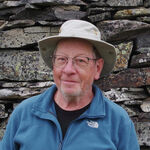Current UIAA Policy as of July 2009 before the Nepal Meeting
POSITION PAPER ON THE USE OF SUPPLEMENTARY OXYGEN IN MOUNTAINEERING
Executive summary
1. It is incorrect to use the word “Doping” for the use of supplementary oxygen in mountaineering. The Global authority on the fight against doping (WADA) does not mention oxygen on its list of prohibited substances and methods.
2. The highest standard to climb a route on big mountains is to refrain from using supplementary
oxygen.
3. Mountain guides, Mountain clubs, Expedition leaders or Tour operators should inform their clients or members about the risks of hypoxic conditions (occurring while climbing at high altitude) to the human brain.
4. The mountaineer chooses the style which fits him best, given his abilities and experience and risk assessment. The choice to use or to refrain from using supplementary oxygen lies with the
individual mountaineer
5. As long as supplementary oxygen-assisted ascents are clearly communicated as such, the use of supplementary oxygen does not seem to be a problem from an ethical point of view. It is important that mountaineers are truthful and open about their achievements, including the style in which the ascents have been made.
6. Proper acclimatization is always superior to the use of supplementary oxygen to prevent acute mountain Sickness (AMS) but it can never offset the risks of hypoxic conditions at very high altitude [‘the death zone’, above 8000 m (26,250 feet) ] to the human brain.
Introduction The use of supplementary oxygen in high altitude Mountaineering has been under debate for several years. In this debate, different aspects related to the topic can be distinguished, such as medical aspects and ethical aspects. It has also been linked to the discussion about the use of doping in Sports. The International Federation for Mountaineering and Climbing (UIAA) wishes to take a position in this debate and to make a clear statement regarding various aspects related to the use of supplementary oxygen in Mountaineering. This position paper is not a static paper: it will be updated when new relevant developments will ask for amendments.
Three aspects will be considered in relation to the use of supplementary oxygen:
I. Supplementary oxygen in relation to the World Anti-Doping Code (“WADA-code”)
II. Medical aspects related to the use of supplementary oxygen in high altitude mountaineering
III. Ethical aspects related to the use of supplementary oxygen in high altitude mountaineering
I. The use of supplementary Oxygen in relation to the World Anti Doping code (“WADA
code”) The World Anti Doping Agency is concerned with the global fight against the use of Doping.
The so called WADA code makes reference to a list of prohibited substances and methods. Oxygen or the use of supplementary oxygen does not appear on the WADA list of prohibited substances or methods. Therefore, it is not correct to use the qualification ‘Doping’ for this method. The use of supplementary oxygen could theoretically be added to the WADA list of prohibited substances and methods.
Addition of supplementary oxygen to the WADA list would (in theory) be possible if its use is
considered to meet two out of three criteria for doping:
1. performance enhancement
2. health risks,and/or
3. being in conflict with the Spirit of Sport.
A combination of 1. and 3. cannot be completely excluded in the case of oxygen, but this seems for the time being - rather unlikely. If the UIAA itself wants to ban the use of supplementary
oxygen, a request could be directed to WADA to add the use of supplementary oxygen to the
forbidden substances and methods on the WADA-list (see article 4.2 of the Code). As WADA
seeks international harmonization, it is rather unlikely that oxygen will be added to the list upon
request of just one International Federation.
II. Medical aspects related to the use of supplementary oxygen at high altitude
There is scientific evidence that human brain cells are dying in hypoxic conditions. These
conditions occur during ascents of big mountains at higher altitudes. High altitude mountaineers
should be (made) aware of these facts and should make their own choice whether they wish to
plan their ascents with the aide of supplementary oxygen or without it.
Mountain guides, Mountain clubs, Expedition leaders or tour operators should inform their clients or members about the risks of climbing at high altitude to the human body, more specifically the risk of hypoxic conditions to the human brain.
A well planned acclimatisation program is the first choice to reduce the risks of hypoxic conditions (acute mountain sickness) to the human body, but it can never offset the risks of hypoxic conditions at very high altitude [‘the death zone’, above 8000 m (26,250 feet)] to the human brain.
Ethical aspects related to the use of supplementary oxygen in Mountaineering
In mountaineering, we can distinguish many forms of the ‘climbing game’; we cannot compare
achievements made with the help of supplementary oxygen to those ascents which were made
without it. This can be compared to the difference between free-climbing a route (fixtures are only used to protect the climber) and climbing a route while also using fixtures for progress.
The highest standard to climb a route is free climbing, and at high altitude to refrain from using
supplementary oxygen. This can be considered as ‘Alpine style’ climbing on big mountains.
Aspects of this style are to refrain from using fixed ropes or supplementary oxygen. The mountaineer chooses the style which fits him best, given his abilities and experience and risk assessment. The choice to use or to refrain from using supplementary oxygen lies with the
individual mountaineer.
As long as supplementary oxygen-assisted ascents are clearly communicated as such, this does not seem to be a problem from an ethical point of view.
Taking into account the historical development with regard to the use of supplementary oxygen,
UIAA does not give a qualification to achievements, made in the past. These achievements
(ascents) must be judged against the conditions and circumstances at the time these ascents
were made.
Agreed and accepted by the UIAA Executive Board on 11th July 2009











